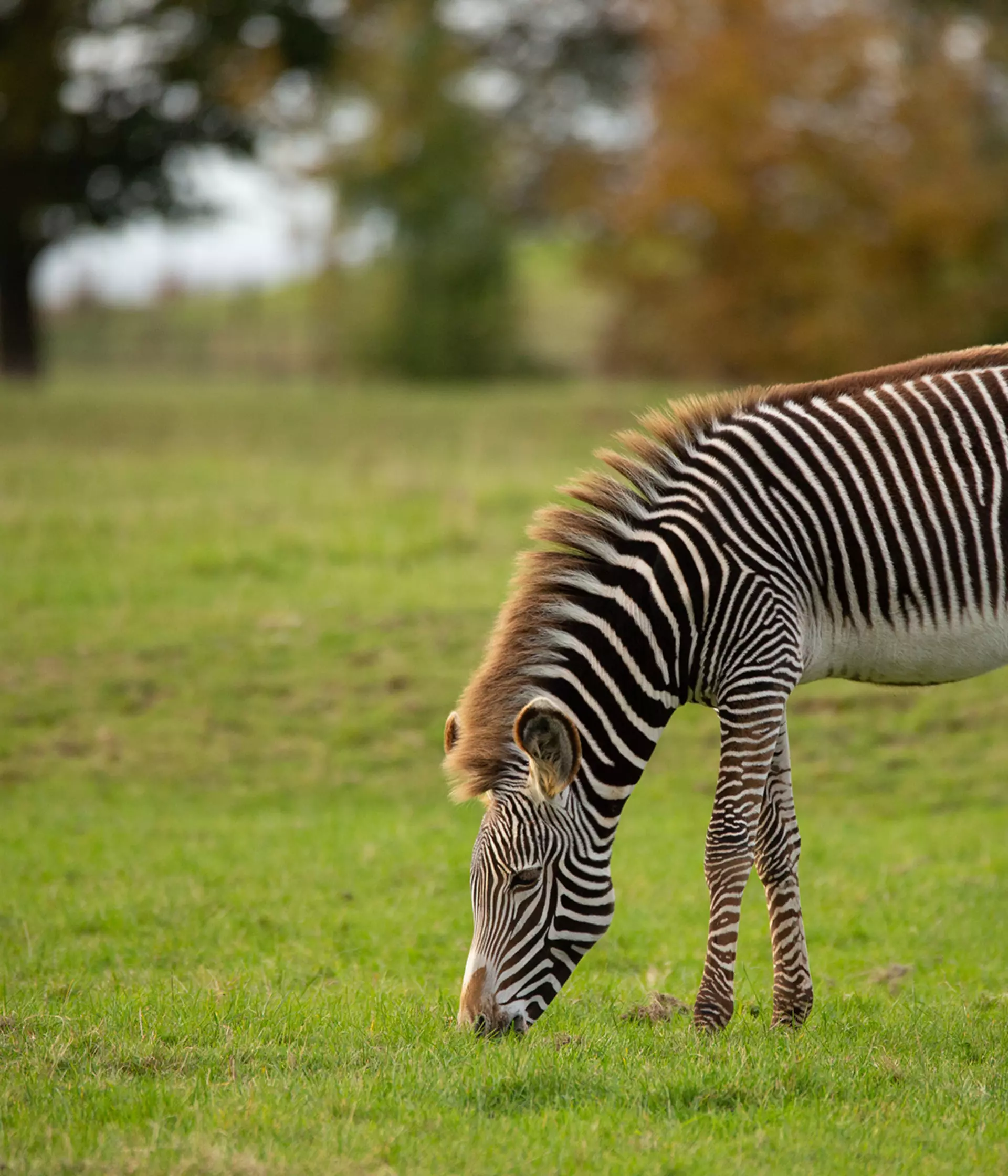Grevy's zebra are most threatened species of zebra. They have much narrower stripes than other two species of zebra, and can live on grasses which are too tough for cattle to eat or digest. Grevy's zebra are the largest wild equid, which is the same family as horses.
Grevy's zebra facts
- They are generally social animals, and a herd of zebras can be known as a dazzle.
- Just as every human has a unique set of fingerprints, every zebra has a unique stripe pattern.
- Zebras are hindgut fermenters, which means their digestive systems are adapted to tackle highly fibrous plants, including grass, twigs and bark.
- Like other hoofed animals, zebras have locking joints. So they can subconsciously lock their knees into position and doze without worrying about falling over.
- Masters of endurance, zebras are also fast on their feet. They can reach speeds up to 65kmph, nearly double the pace of Olympian Usain Bolt!
Grevy zebra threats
In the past - particularly in the 1970s and 80s - the species suffered declining numbers due to commercial hunting for their skins and have continued to be affected by habitat loss. Anthrax outbreaks are slowing down their recovery in the wild. Their main predator is the African lion, but they can also be hunted by African hunting dogs, Cheetahs, spotted hyenas and leopards.
Our Grevy's zebra
Meet our Grevy's zebra herd as they enjoy their lunch. Our zookeepers explain how they tell each individual zebra apart!
Are zebras white with black stripes or black with white stripes?
Zebras are generally thought to have white coats with black stripes. That's because if you look at most zebras, the stripes end on their bellies and toward the insides of their legs, and the rest is all white. However, some zebras are born with genetic variations that make them all black with white stripes, or mostly dark with the striped pattern only on part of their coats. And, as it turns out, zebras have black skin underneath their hair. So it kind of depends on how you look at it!
Why do zebras have stripes?
There are many theories as to why zebras have stripes. One is that they may provide a dazzling form of camouflage against predators such a lions. When zebras are moving in a herd, their stripe patterns could make it hard to attackers to pick out individual animals. Their distinctive coats may also help zebras to recognise each other. Another theory is their markings prevent attacks from disease-carrying horseflies, which avoid striped surfaces. Scientists have also suggested that their stripes help to regulate their body temperature, and could even act as a natural sunscreen.
